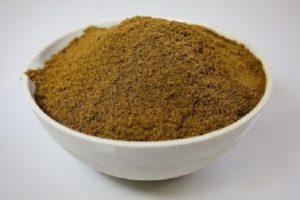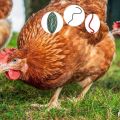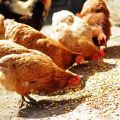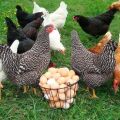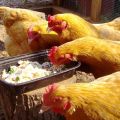Composition of compound feed PK1.1 for feeding laying hens and consumption rate
The main condition for the successful rearing of poultry is the organization of its proper nutrition. The use of compound feed PK-1.1 for laying hens will provide such a task and will serve as a guarantee of their high egg production. PK-1 feed contains useful chemical elements and vitamins, is easily absorbed by the chicken digestive system. When choosing the composition of the mixture, the age of the layers should be taken into account.
Composition and features of compound feed PK-1
Compound feed is a complex composition used for feeding birds and animals in modern agriculture. It includes biological and mineral nutritional components. They are pretreated to increase the calorie content of the mixture. It can be loose, expanded, granular.
The PK-1 mixture contains the following elements:
- crude protein;
- crude fiber;
- crude fat:
- linoleic acid;
- lysine;
- tryptophan;
- methionine;
- calcium;
- chlorine;
- sodium;
- phosphorus;
- iron;
- other elements necessary for the body.
In addition, the mixture contains vitamins of group B, A, E, D. The composition of the compound feed is regulated by GOST. It includes the following ingredients:
- corn grains;
- wheat;
- sunflower seed husks;
- bran and cake of wheat;
- soybean meal;
- food phosphates;
- yeast;
- limestone.
Feed mixtures include antioxidants, prebiotics, antibacterial drugs.
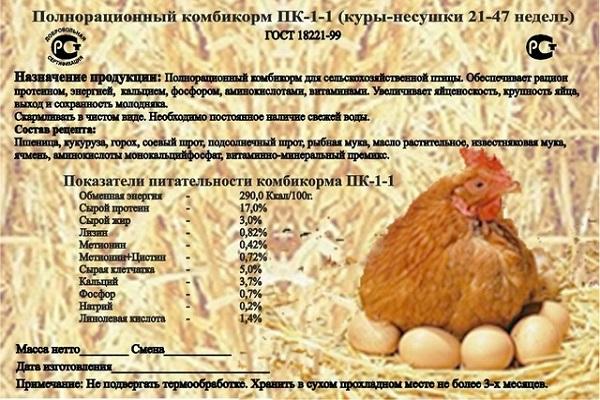
Advantages and disadvantages
Among the advantages of the compound feeds of the PK-1 line are the following:
- The presence of the full composition of the necessary ingredients in the mixtures.
- Balance. All elements are contained in the required proportion.
- Profitability. A small dose of feed is enough to obtain a complete diet.
- You can choose a composition for a specific age of layers.
The disadvantages include the need to search in stores for the desired brand, its cost. To get a quality product, you need to purchase it from trusted manufacturers.
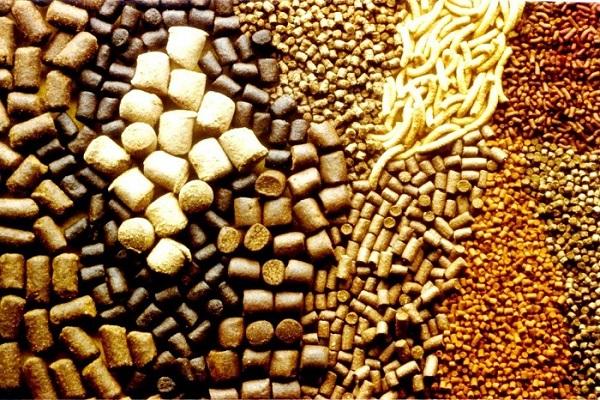
Varieties of compound feed PK-1
This mixture has several brands that differ in percentage composition, calorie content and purpose for different ages of chickens.
Food PK-1.2. This formulation is intended for hens over 48 weeks old. Improves the taste of eggs, makes their yolk bright orange, and the shell - hard. It stabilizes the general condition of the chicken, makes it thicker fluff.
The dry mix PC-1.1 is used for feeding young poultry up to 45 weeks of age. Affects the health of the bird, increases egg production and quality of eggs, their taste.
PC-1.3 is suitable for laying hens over 45 weeks old. It differs from PK-1.2 in its composition, but its effect on the chicken organism is similar.Available in the form of granules.
Important. Proteins are essential in poultry feed, but too much protein is just as unacceptable as a lack.

How to feed chickens with compound feed
Dry compound feed for chickens is similar to cereals. It is scattered on the ground so that the bird moves when feeding. An active lifestyle does not allow her to build up excess fat, which is bad for the number of eggs laid.
When keeping hens in cages, the mixture is poured into the feeders. Do not forget to pour water into the drinking bowl. In this case, it is the chicken's only source of liquid.
It should be borne in mind that adult chickens crowd out young ones, and they receive less food. Therefore, try to feed the young separately.
Remember that you cannot limit yourself to compound feed in the diet of a bird. Vegetables, grass, pebbles should be present.
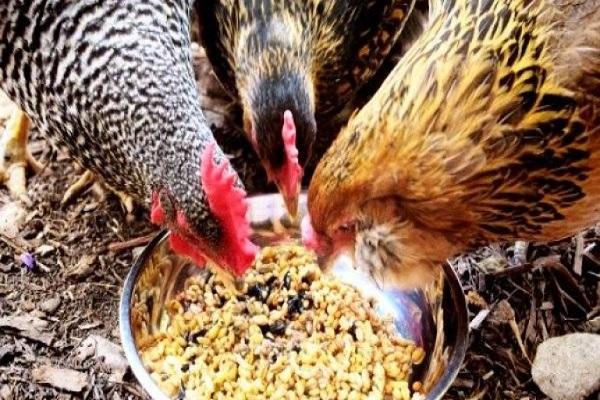
How much compound feed should laying hens eat
Usually, 120 grams of PK-1 compound feed is enough for one laying hen over 6 months old. The bird owner can independently determine this amount. There is such a method for determining the satiety of chickens: if the bird ate a portion in 20 minutes, it will remain hungry, if after 40 minutes the feed is not eaten, it turns out to be an excess.
The daily rate of compound feed is indicated on its packaging. This is a noticeable clue for the owner of the layers. The rate is divided into two steps. The first feeding is done no later than 8 am.
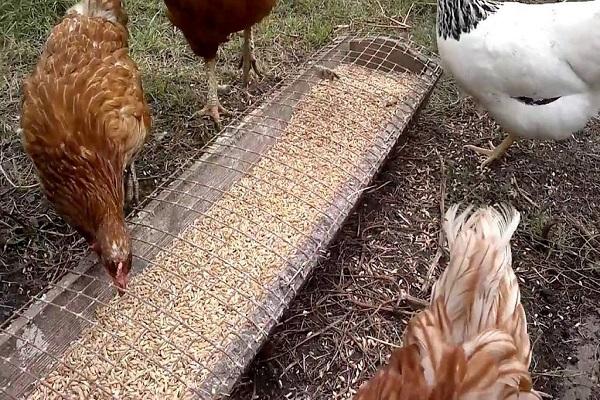
Storage rules
Store the compound feed PK-1, like all dry mixes, in a dry ventilated area. For storage, bags are used in which food is sold, wooden boxes. For a short period, it is permissible to take plastic and metal buckets with a lid.
The container must be ventilated and protect the mixture from rodents and debris and other foreign bodies. Do not forget about the shelf life of the product.

Where to buy
A number of feed processing plants are involved in the production of feed mixtures. Almost every region has such an enterprise. When purchasing compound feed in a store, you should make sure you have a certificate. It will not be superfluous to read customer reviews.
For a private consumer, PK-1 food is produced in bags weighing 25 or 40 kilograms. Such packaging is convenient for small farms and private households.
The choice of the brand of compound feed for laying hens is quite wide, but if you want to get a healthy bird that lays up to 250 eggs per year, it is better to stay on the PK-1 mixture.
